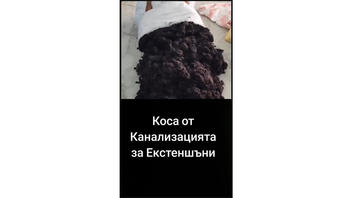
Is it true that the hair used for extensions is sourced from the sewers and public baths in India? No, that's not true: Hair extensions are actually made from high-quality human hair obtained from different countries, such as India, China, and Russia. Indian women donate their hair as a religious act, and the Hindu temple authorities collect it.
The claim appeared in a TikTok video (archived here) published on November 7, 2023 under the title "Hair for extensions sourced from the sewage" and translated from Bulgarian by Lead Stories staff. It opened:
Where does the hair for hair extensions come from? From the sewers in India. From their public baths. It is collected, lice and dirt are removed, smoothed, painted to make it shiny and given to the chalga girls to look a little better in the chalga discos.
This is what the post looked like on TikTok at the time of writing:

(Source: TikTok screenshot taken on Wed Nov 15 20:11:58 2023 UTC)
The source of hair for extensions is not sewers or public baths in India, as some rumours suggest. The hair comes from donors who offer their hair for religious reasons, mainly to honour Vishnu, a Hindu God. Hindu temples gather the hair and sell it, often donating the proceeds to charity. China and Russia are the main exporters of human hair, but Indian hair is valued for its quality and generates $300 million a year in exports. The extensions market appreciates Indian hair for its quality, especially Remy hair, which has less tangling because of its aligned cuticles. Synthetic hair can be used for extensions, but human hair is preferred by many salons because it can be bleached and styled with heat.
A major source of human hair for wigs and extensions is Asia, where hair is abundant, cheap, and straight. However, this industry has problems, such as unethical and unhealthy practices or exploitation. Experts recommend natural, ethical, and durable hair that can last for years from a supplier that can provide information about its origin and processing.


















